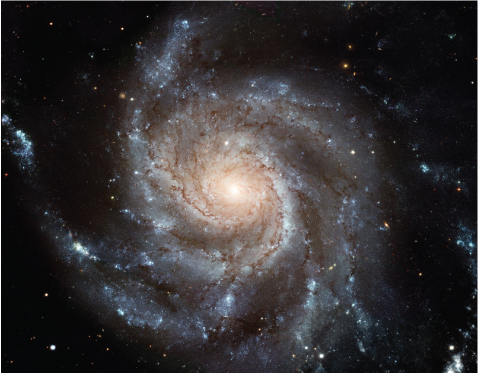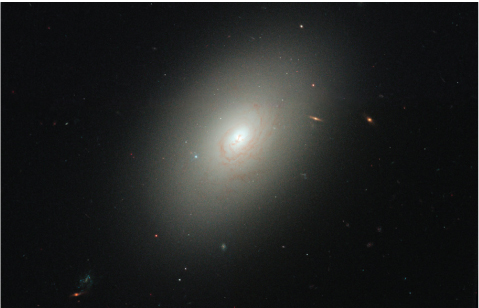2.2 The Milky Way and other galaxies
Groups of stars congregate due to the force of gravity between them, forming galaxies.
Video 3 shows the structure of the Milky Way, the Galaxy that contains our Solar System. Our most precise knowledge of the distances to the stars comes from the space missions that used the satellites Hipparcos and Gaia, whose ranges are indicated towards the end of the video.
Astronomers are not completely sure how many stars the Milky Way contains, with 400 billion being their best estimate. It is now known that many of these stars have their own systems of planets. Based on the number of planets astronomers have found so far, it is thought that there are even more planets in the Galaxy than stars. Just how numerous planets are will become clearer in the near future, as astronomers work on trying to find as many planets as possible around the stars closest to the Sun.
Galaxies tend to fall into two groups:
- spiral galaxies (Figure 19), such as the Milky Way, which contain stars of a variety of ages, including young stars that are still forming
- elliptical galaxies (Figure 20), which contain mostly older stars and look like fuzzy blobs.
Spiral galaxies are prettier (at least in common belief!).
Activity _unit2.2.1 Activity 4 Hierarchy of the Universe
Put the following in order of the hierarchy, from smallest (1) to largest (3):
Two lists follow, match one item from the first with one item from the second. Each item can only be matched once. There are 3 items in each list.
-
Star
-
Planetary system
-
Galaxy
Match each of the previous list items with an item from the following list:
a.2
b.3
c.1
- 1 = c,
- 2 = a,
- 3 = b
Answer
- Star
- Planetary system
- Galaxy
Galaxies themselves congregate in groups, clusters and superclusters. Astronomers’ best estimate is that there are over 100 billion galaxies (that is 100 000 000 000 galaxies) in the observable Universe. It is daunting to think that the Sun is only one star among something like 400 000 000 000 × 100 000 000 000 in the observable Universe! But fear not! In this course you will focus only on exoplanets and stars in the Milky Way: galaxies beyond our own and the possibly infinite Universe are covered elsewhere.


